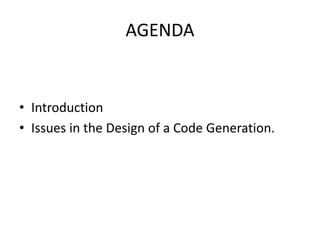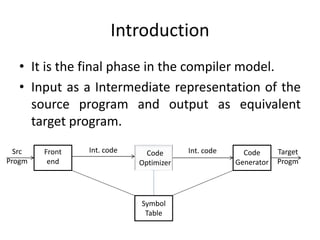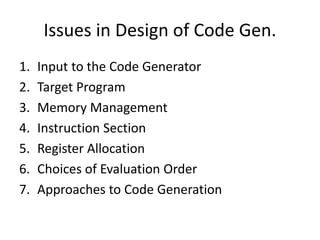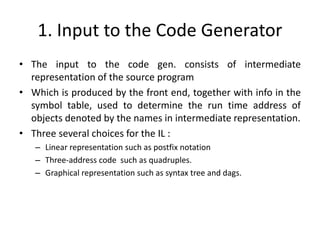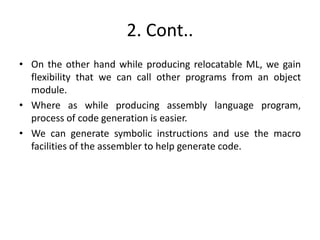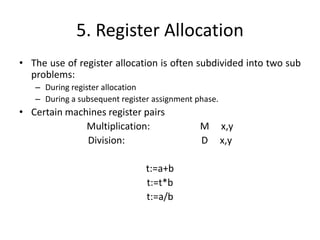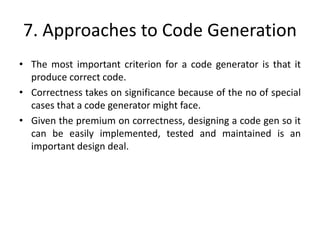The document summarizes issues in the design of a code generator, which is the final phase of the compiler. It discusses the input to the code generator, which is an intermediate representation from the front end. It also discusses the target program output formats like absolute machine language, relocatable machine language, and assembly language. Additional topics covered include memory management mapping names to runtime addresses, instruction selection based on the target machine's instruction set, register allocation, choices of evaluation order, and approaches to code generation focusing on producing correct code.

